Epoxy resin is a synthetic oligomeric compound widely used for the manufacture of paints and varnishes (paints and varnishes), adhesives, to create beautiful and durable household products. Hardener for epoxy resin helps it gain its final properties, as it starts the polymerization process.
- Hardener Functions
- Hardener classification
- Traditional hardeners (PEPA, TETA, DTB-2)
- Modern compositions
- M-4
- Hardener 921
- Hardener 620
- Etal
- AF-2
- Hardeners No. 1, 2, 3, 4, 5 for epoxy
- Resin Dilution Instructions
- Cooking order
- Receiving small volumes of resin
- Large Resin
- Component Mixing
- Cure time
- Safety precautions
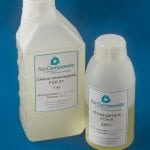
Hardener Functions
The type of curing of epoxy is very different from that of other coatings. If paints, primers, adhesives harden after evaporation of the liquid, the resin can be cured only after adding a special solution. Therefore, the epoxy is called two-component.
Hardener - a liquid chemical substance, a catalyst (accelerator) of a chemical reaction and its full participant. After the resin and hardener are combined, the polymerization process begins, as a result, the composition acquires a stable (solid) state.
It is important to add strictly established proportions of both components of the mixture. The accuracy of the ratio of funds determines the following properties of the final material:
- solidification time;
- transparency;
- durability;
- hardness;
- uniformity.
Why is the correct chemical composition of the mass so important? If you violate the proportions, the qualitative characteristics of the mixture will decrease, as well as the life of the finished compound. Correct dilution will allow you to get a high-quality thermoset composition, which will have the following characteristics:
- high adhesion with most known materials;
- excellent water resistance, tensile strength, fracture, mechanical damage and the action of chemistry;
- dielectric qualities;
- non-shrinking form or slight shrinkage during operation.
Hardener classification
All hardeners according to their chemical group are divided into two types:
- Amine. This includes amines, polyamines and diamines, including polyethylene polyamine, hexamethylene diamine. These hardeners are most common among masters, they can dilute any resin. Epoxy after they are added will harden even at room temperature. This type of curing is called cold.
- Acidic. Carboxylic acids and their anhydrides are used - maleic, phthalic, hexahydrophthalic and others. Acid hardeners give a more reliable result, but are difficult to use. This type of curing is called hot, and during temperature exposure (100-200 degrees), epoxy improves the physicochemical properties.
At home, it is recommended to use only amine solutions, although with sufficient experience and skill you can cure the epoxy resin with acids.
to contents ↑Traditional hardeners (PEPA, TETA, DTB-2)
Hardeners have a huge impact on the resin, so you should not save on their quality. It is better to buy a product made according to the standard and recommended by the manufacturer to a specific type of epoxy. Hardeners are traditional and modified (modern).The most cost-effective PEPA and TETA, which are produced by many companies, are quite cheap, convenient to use, but inferior in quality to expensive modified products.
PEPA or polyethylene polyamine (included in the glue EDA, EDP, a number of primers and enamels) is a very popular material. Working with it is simple, it does not even require strict adherence to technology. It can be used at room temperature.
In appearance, PEPA is a viscous brown liquid, therefore, where it is important to preserve a transparent material, the use of a hardener will be impossible. Uncontrolled impurities make up to 75% of the product, and only 25% of the product is involved in the reaction with the resin. This is the reason that PEPA cannot be used for products in contact with food or water.
TETA or triethylenetetramine is a clear liquid with a pungent odor imported. It is a better replacement for the previous tool. The product description indicates that the impurities are not more than 4%, but the composition is less than tertiary amino groups. This reduces the ability to polymerize at room temperature, and curing is best done at elevated temperatures. Strict adherence to technology and proportions in working with TETA is mandatory. From the pros should indicate:
- high strength;
- uniformity and transparency;
- chemical purity.
Hardener DTB-2 is a mixture of amino esters of complex composition, an inviscid, yellow-colored liquid. Allows to breed epoxy at room temperature. Technical characteristics of the finished product:
- high impact resistance;
- moisture resistance;
- low abrasion;
- excellent gloss.
to contents ↑DBT-2 mixed with epoxy is used for the preparation of casting compounds, bulk floors, mixtures for the restoration of bathtubs.
Modern compositions
What can replace the described means? Modified hardeners are devoid of most of the disadvantages of traditional ones, but their price is much higher. Finished products will have higher strength properties, since the resin polymerizes more fully. Means act as plasticizers - in some cases they are able to dilute and plasticize epoxy.
M-4
Hardener M 4 - amine hardener of a modified type, liquid with high viscosity, color - red-brown. M4 must be mixed with epoxy in a volume of 20 - 25% of the base material. The substance is able to cure epoxy even at a temperature of + 2 ... + 5 degrees - this does not hinder to obtain a product of increased strength.
Rapid curing agent made on the basis of PEPA, improved in composition and properties. In addition to cold curing, if necessary, hot polymerization can be done with M4. The time of plasticization and gelatinization at room temperature will be 30 - 50 minutes, at lower temperatures it will increase.
to contents ↑Hardener 921
In the 921 series, several varieties of hardeners are sold - 921, 921 OP, 921 T. These are low-viscosity products that allow you to get unique epoxy compositions with high resistance to damage, UV radiation.
Finished products will not fade from the sun, which not all hardeners can provide. Most often, 921 is used to cover yachts and boats, as it can be superimposed with a layer up to 0.5 cm thick. The product can harden even thick epoxy layers - up to 10 cm. To work, it must be mixed in a volume of 45 - 55% by weight of the resin.
Hardener 620
UP-620 - a tool with high activity, can cure resin even in conditions of high humidity. It is added to the epoxy in a small volume - only 15 - 18%, which is enough to obtain cold polymerization fillings.
The product is used as a part of compounds, binders for plastic, bulk floor. It is allowed to use a hardener at a temperature of +15 degrees. The resulting products are highly moisture resistant.
to contents ↑Etal
Amine hardener, non-toxic, odorless. Designed for the polymerization of epoxy and compounds at any humidity, temperature, starting from -20 degrees.It is one of the most modern means, coupled with epoxy resin is used for such purposes:
- anticorrosive coating of metal - pipes, floors, roofs, tanks;
- repair of metal, plastic, fiberglass products;
- sealing of electrical products;
- creation of fillings and impregnations;
- production of adhesives resistant to acids and alkalis.
AF-2
The basis of the drug is aminophenol. It is a mixed product - the result of the connection of phenol, formaldehyde, amine. The hardener allows you to polymerize the resin in a cold way under the most adverse conditions - at high humidity and low temperature. It is added to the resin in an amount of 20 - 25%, at room temperature it cures in 24 hours.
Hardeners No. 1, 2, 3, 4, 5 for epoxy
All products listed are polyaminoamides. The most popular hardener 1 is a solution of 50% hexamethylenediamine in ethanol. The tool is used not only for curing resins, but also to create coatings based on them. Most often, hardener No. 1 is used in the production of adhesives. The appearance of the liquid is yellow-brown, viscous, without sediment.
Hardener No. 2 has a similar application, but in composition it is a solution of polyamide resin in organic solvents. The liquid is transparent, without color, without sediment and inclusions. Gelatinization time is 11-17 minutes. The composition of other hardeners is as follows:
- No. 3 - a solution of 50% PO-200 on a mixture of organic solvents;
- No. 4 - a solution of 30% PO-201 on a mixture of organic solvents;
- No. 5 - a solution of 50% PO 300 on a mixture of organic solvents.
Resin Dilution Instructions
How to dilute epoxy correctly, what is necessary? Before starting work, you should prepare a mixing container, a wooden stick, 2 syringes for a set of substances. Beginners need to remember that the ongoing reactions are irreversible - it will be impossible to restore the damaged epoxy. It is better to pre-conduct "test" mixing in small quantities in order to accurately calculate the dosage.
Cooking order
Despite the possibility of cold curing using high-quality hardeners, it is worth a little warming up the resin. This will make the composition less viscous, but crystallization and boiling cannot be allowed (boiling will spoil the epoxy, it can be thrown away). During heating, mix the material regularly and monitor the temperature.
The calculation of the solvent rate is very important. If you add a little, the material will remain in the gelation stage or harden, but the surface will be sticky. It is necessary to carefully read the instructions for the epoxy, it always indicates the proportionality of the dilution. All formulations are different, and the hardener rate can vary from 10 to 50%. Replace hardeners with those that are not indicated in the manufacturer's recommendations, it is impossible!
to contents ↑Recruit the right amount of components into two separate syringes. Some companies produce material complete with plastic bottles that have marks (measuring cups) on them. To fill the hardener, the needle is not needed, it is removed. The thick resin is completely poured through the upper part of the syringe, removing the piston - it will not retract through the narrow nose.
Receiving small volumes of resin
To get a little composition for domestic use, cold curing is practiced. The collected amount of components is interconnected in a container, carefully, but gently mixed. For this purpose, you can not use a power tool, it is advisable to use only a wooden stick. Work is performed at temperatures up to +25 degrees indoors.
to contents ↑In the finished mass there should be no air bubbles, impurities, the composition becomes completely transparent. The consistency of the product, if everything is done correctly, is smooth, uniform.
Large Resin
Since the polymerisation reaction of the resin proceeds with the release of heat, only small portions of the product can be obtained by cold curing. When connecting large volumes, you should heat the epoxy in a water bath to +50 degrees. Next, the composition is urgently removed and a hardener is added. It is strictly forbidden to get into the resin water - this will lead to a complete loss of properties.
After epoxy heating, it will be necessary to work very quickly, therefore the container and correctly measured hardener must be prepared in advance. Stirring must be thorough.
to contents ↑Component Mixing
Many brands of epoxy resins require plasticizers to create the finished product. A number of hardeners combine both properties, so it is worth using DEG-1, DBF. The hardener is poured in a thin stream, the composition is thoroughly mixed with the other hand. Ideally, if the infusion and kneading process lasts about 5 minutes.
Cure time
How much does the resin dry after bonding the components? This time is determined individually, the upper and lower boundaries of the period are always indicated in the instructions. Prior to drying, the epoxy retains viscosity, fluidity, and is suitable for pouring various products and shapes.
Usually, when diluted 1:10 with a hardener, the material should dry quickly - in 30-60 minutes. With a decrease in the amount of hardener, this time increases to 2 to 3 hours. As for epoxy adhesives, most of them harden in 24 hours.
If the indicated period has passed and the resin is still sticky, the reasons may be as follows:
- too low room temperature;
- the proportions of the components are incorrectly selected;
- water got into the mass;
- hardener expired, low-quality.
Safety precautions
Precautions must be taken during kneading of epoxy. Work should be in a well-ventilated area, gloves, glasses, tight clothing.
Avoid contact with skin and eyes. When penetrating into open parts of the body, they are immediately washed with soap or wiped with acetone. In case of contact with eyes, consult a doctor immediately.

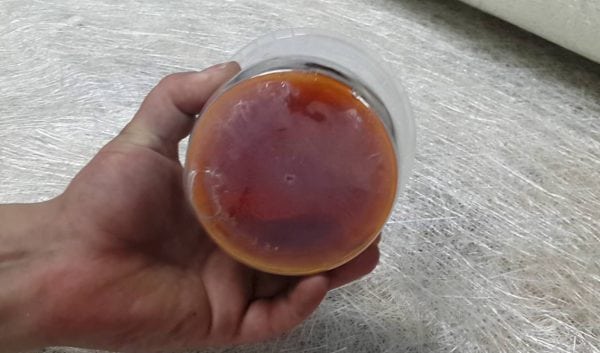
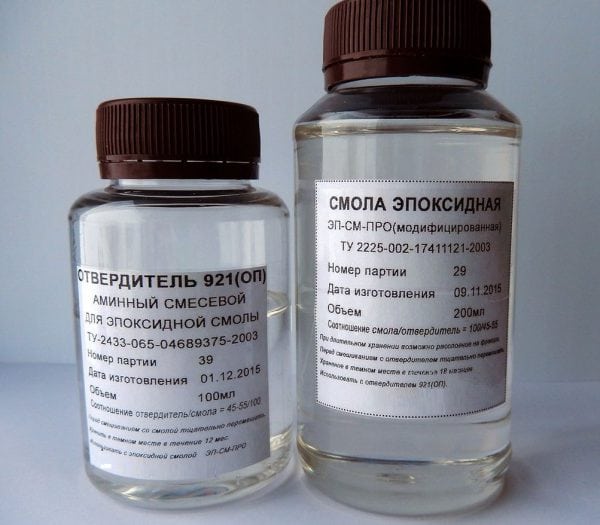
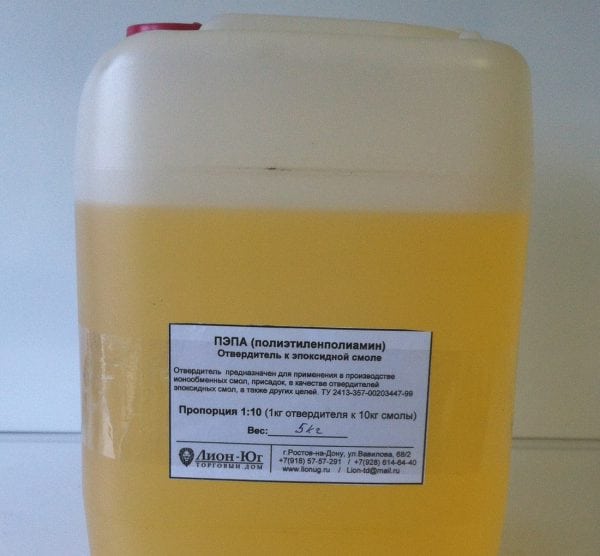

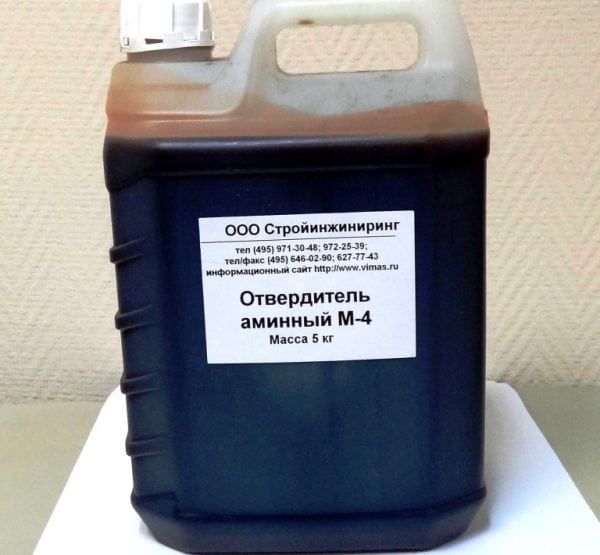
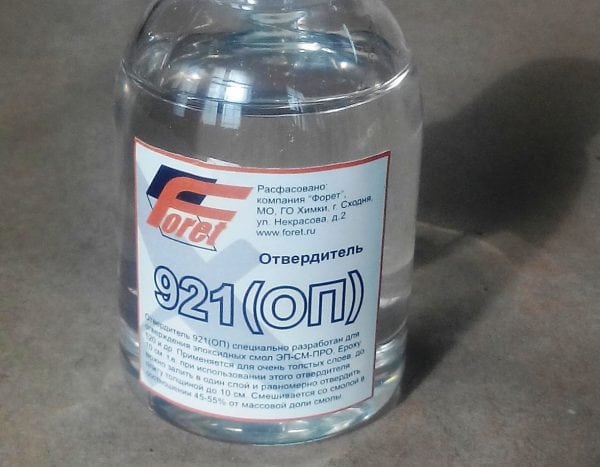
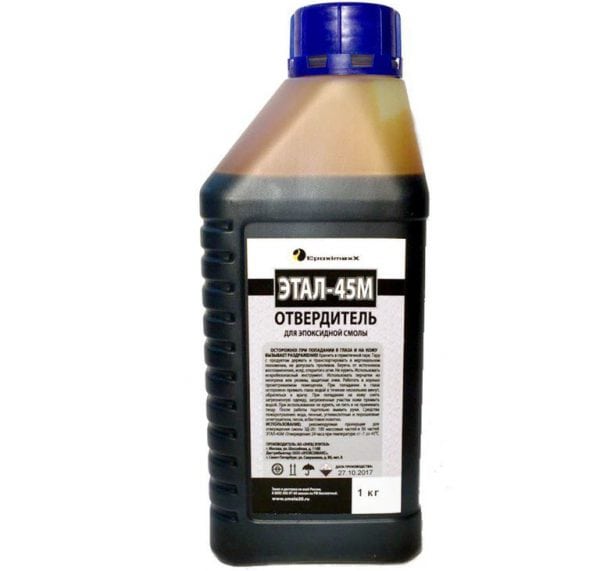
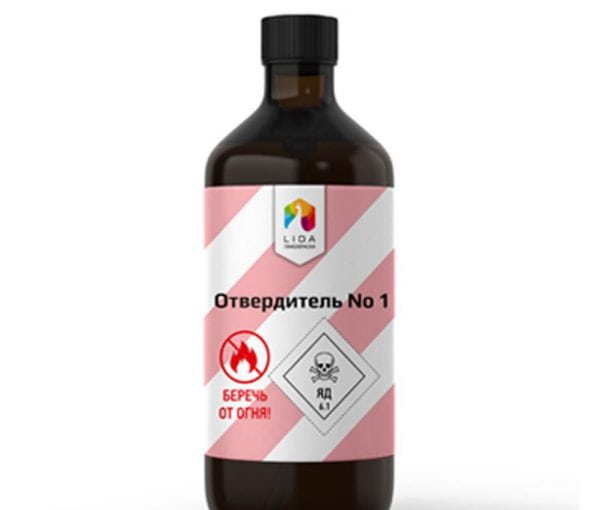
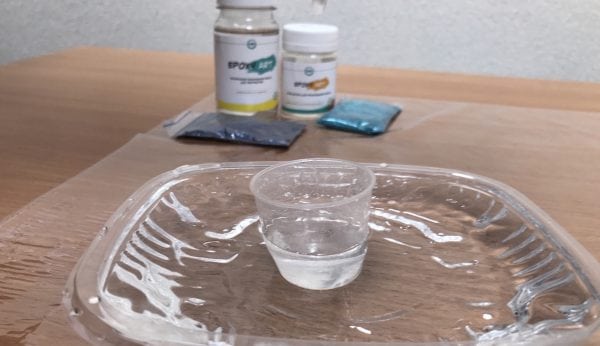
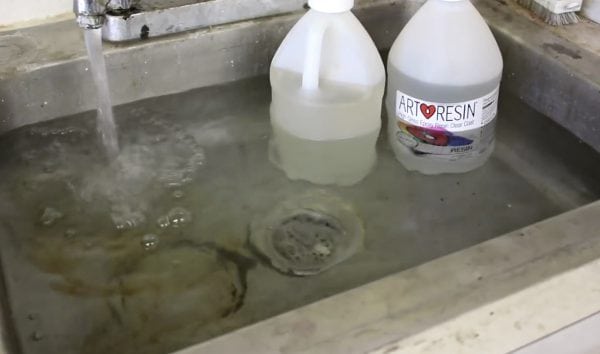
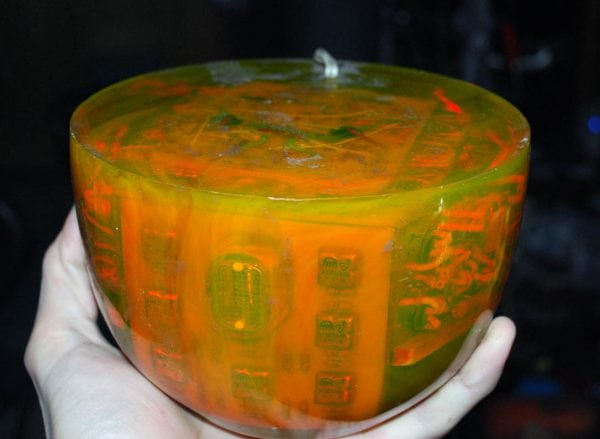


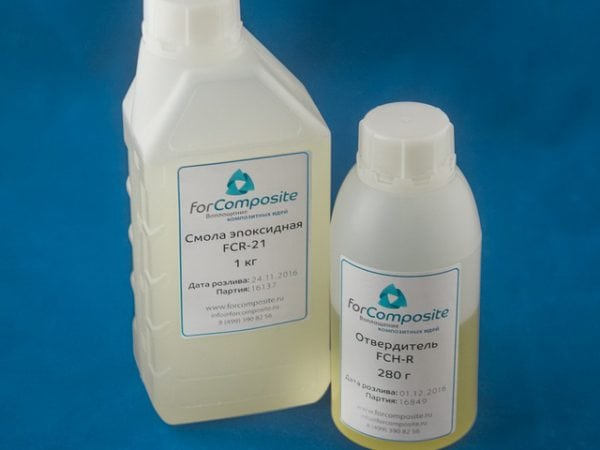

Good evening, interested in the hardener for epoxy resins No. 2, send more detailed information on this hardener, as well as its packaging and price. First of all, curing time at room temperature, dosage of hardener, whether post-curing is required, if polymerization occurred at room temperature, color of the finished mixture of resin and hardener, whether it can be used as glue, adhesion to PET are of interest. The coating is planned to be used to harden parts printed on a 3d printer.